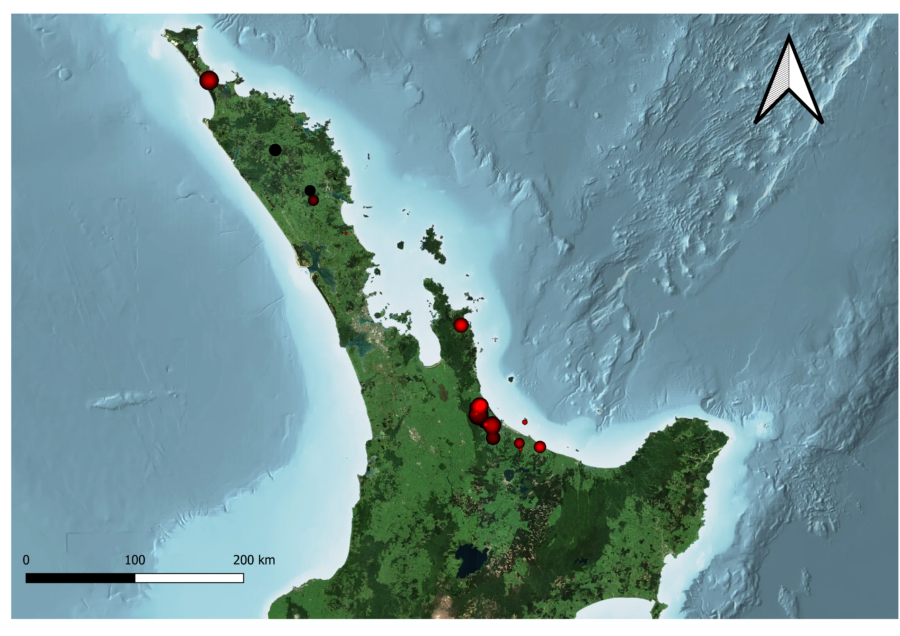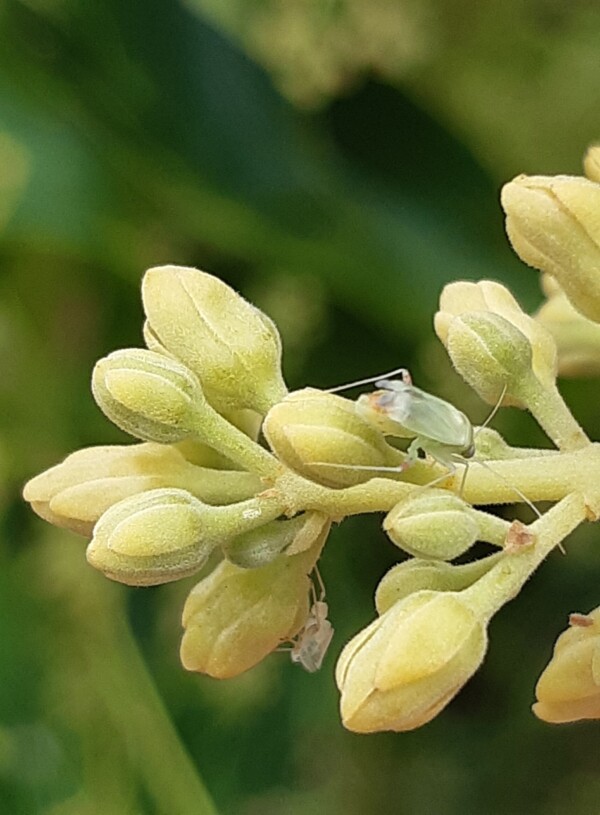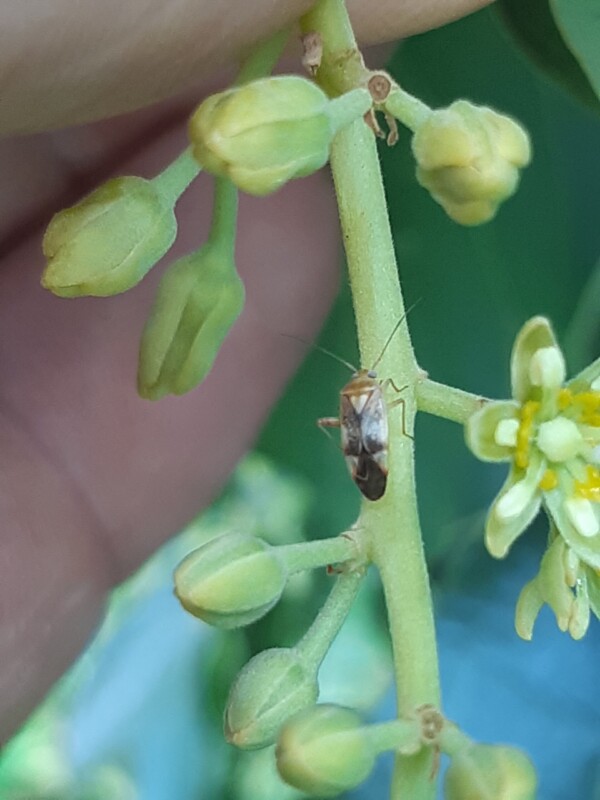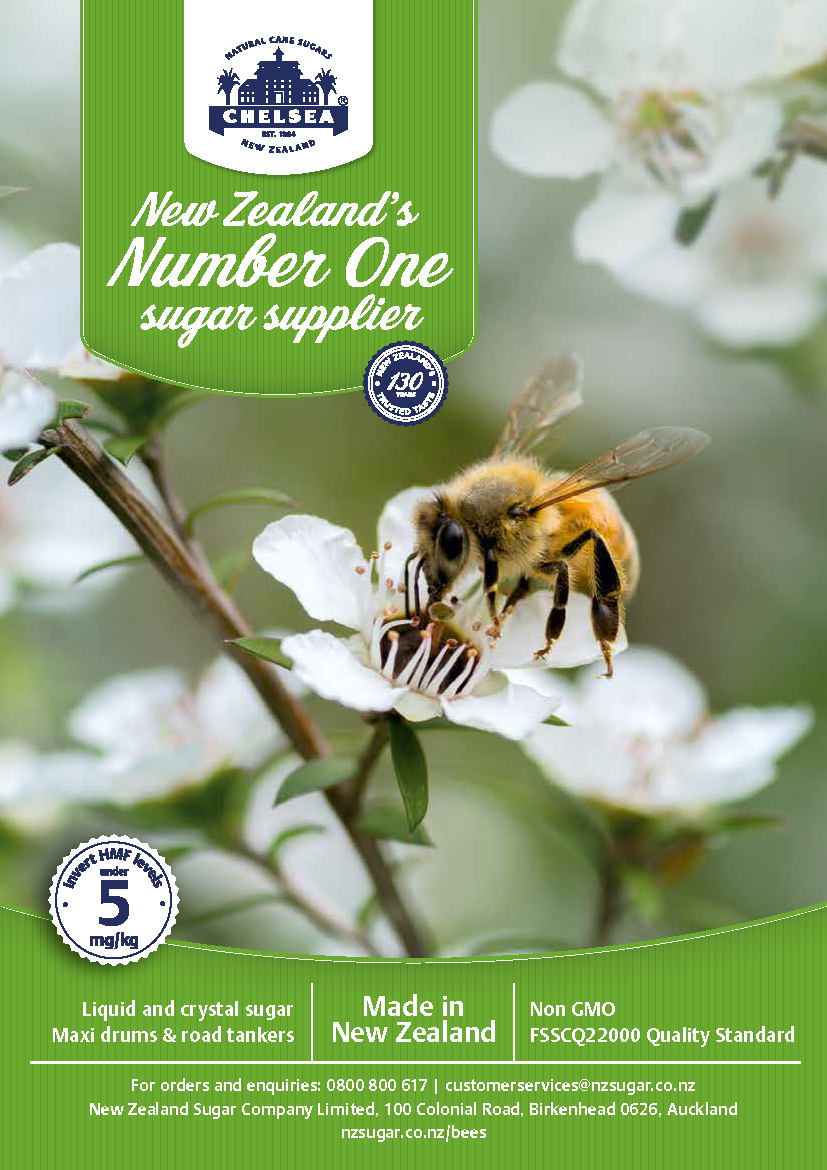BEE HEALTH
While trying to protect crops from pests, New Zealand Avocado has been working with ApiNZ to ensure safe use of pesticides that won’t harm their top pollinators—honey bees. Karen Allan caught up with NZ Avocado Industry Systems Associate Sunmeet Bhatia to see how the spraying programme is progressing.
Mirids (different species in the family Miridae) have been reported as avocado pests in Florida, Colombia, South Africa, Southeast Asia and Australia. New Zealand’s experience is unique, however, as unlike in other countries where mirids often feed on different parts of avocado plants and shoots, local mirids tend to feed just on the flowers. This means that New Zealand growers can’t necessarily use the same type of pesticides as other countries use.
Because it is mirids on flowers that seem to be the problem, pesticide spraying is done at a time of year when bees are also in orchards pollinating avocado flowers. Because honey bee pollination is an essential part of avocado production, NZ Avocado knew communication with the apiculture industry was going to be important as part of any spraying programme, says Sunmeet. To this end NZ Avocado has been giving regular updates to the ApiNZ Science Focus Group, answering questions and taking on board any feedback or concerns raised.
What are mirids?
Although the presence of mirids in avocado flowers has been known for a long time, it is only in the last five to 10 years that they have been recognised as a potential pest with an impact on avocado yields, says Sunmeet.
Mirids feed by inserting their proboscis into flowers or buds. The flower can fall off as a result or just not set fruit. The presence of mirids is suspected to be associated with reduced flower and seed production, lower fruit set, seedless avocadoes (cukes) and deformed fruit. Anecdotal evidence from growers and industry professionals has suggested an increase in fruit set and crop yield after spraying for mirids with natural pyrethrins.
The mirids arrive when avocados start flowering in October and leave afterwards (flowering lasts six to eight weeks). There are currently a lot of unknowns including the identity of the mirid and their life cycle. The threshold needed to affect fruit set and cause flower drop is also not known.
In early 2024 a countrywide survey was conducted to understand the distribution of mirids around the country, their phenology and their relationship to avocado phenology. The survey also sought to understand the relationship of mirid prevalence to agricultural practices such as mowing, tree age, etc.

Figure 1: Mirid hotspots based on incidence and severity (Baselayer: LINZ).
NZ Avocado is working with Plant and Food Research to conduct trials aimed at understanding the scale of the issue and the pest itself. In spring 2024 they began three major activities (Bhatia, 2024):
- a fruit set spray trial—to quantify the impact of mirids on fruit set and yield in avocado
- species identification—to help determine which specific species are causing harm, and gathering information about their life cycle and preferred habitat, and
- a mirid monitoring exercise—to further understand the abundance of mirids and their relationship to avocado phenology across the different avocado growing regions in the country.


Mirid juvenile (left) and adult (right) on avocado panicles. Photo: Jonathan Dixon.
Pyrethrin sprays
Pyrethrin sprays have been chosen because the active chemicals in the spray rapidly break down when exposed to ultraviolet light (https://tinyurl.com/ye2ysh4k). Growers can spray at night when bees are not active and the chemicals will break down in the morning when the sun rises. This is being tested as part of the spray programme and bee mortality rates are also being monitored. While the trial is ongoing, Sunmeet says the data so far shows no difference in bee mortality between sprayed and unsprayed blocks. One of NZ Avocado’s industry partners, Key Industries, is also conducting a separate bee health trial.
Sprays that don’t leave a lasting residue are also ideal for avocado orchards where overlapping seasons mean that while flowering trees are being sprayed for mirids. there could also be current season’s fruit on trees that could be impacted by spray residue.
Following feedback from the Science Focus Group on the dangers of surfactants, NZ Avocado is also trialling sprays without surfactants and they seem to be effective, says Sunmeet.
Within the research programme, NZ Avocado is taking an Integrated Pest Management approach. This allows for the use of alternative pest control methods in the hope that sprays need only be used as a last resort, and not more than necessary, says Sunmeet.
Because the insect is native to New Zealand it means there are potential biological controls that could be used. But using biological control options is currently difficult because so little is known about this insect.
Spray approval process for growers
NZ Avocado has implemented a justified approval process for any growers spraying their orchards for mirids. This includes a checklist that must be checked off before approval is given. Growers must:
- have evidence that they’re monitoring for mirids (not part of regular monitoring, is separate – provide evidence of that such as monitoring sheets)
- liaise with their beekeeper and explain the situation, get consent in writing from the beekeeper
- only use pyrethrin, or similar, sprays as these have been identified as the least harmful option available
- the spray rate cannot exceed the specified rate and growers must cover beehives if required by the beekeeper.
If any concerns arise over a growers use of pesticides, Sunmeet says NZ Avocado’s first response is always to talk to the grower,explain to them the reason for the requirements and work with them to ensure the requirements for spraying are met.
General education of growers around safe use of mirid sprays includes regular information in the NZ Avocado journal Avoscene, information at field days and on their website.
Reference
Bhatia, S. (2024, September). Mirids in avocados research programme. Avoscene, pp1,5.

